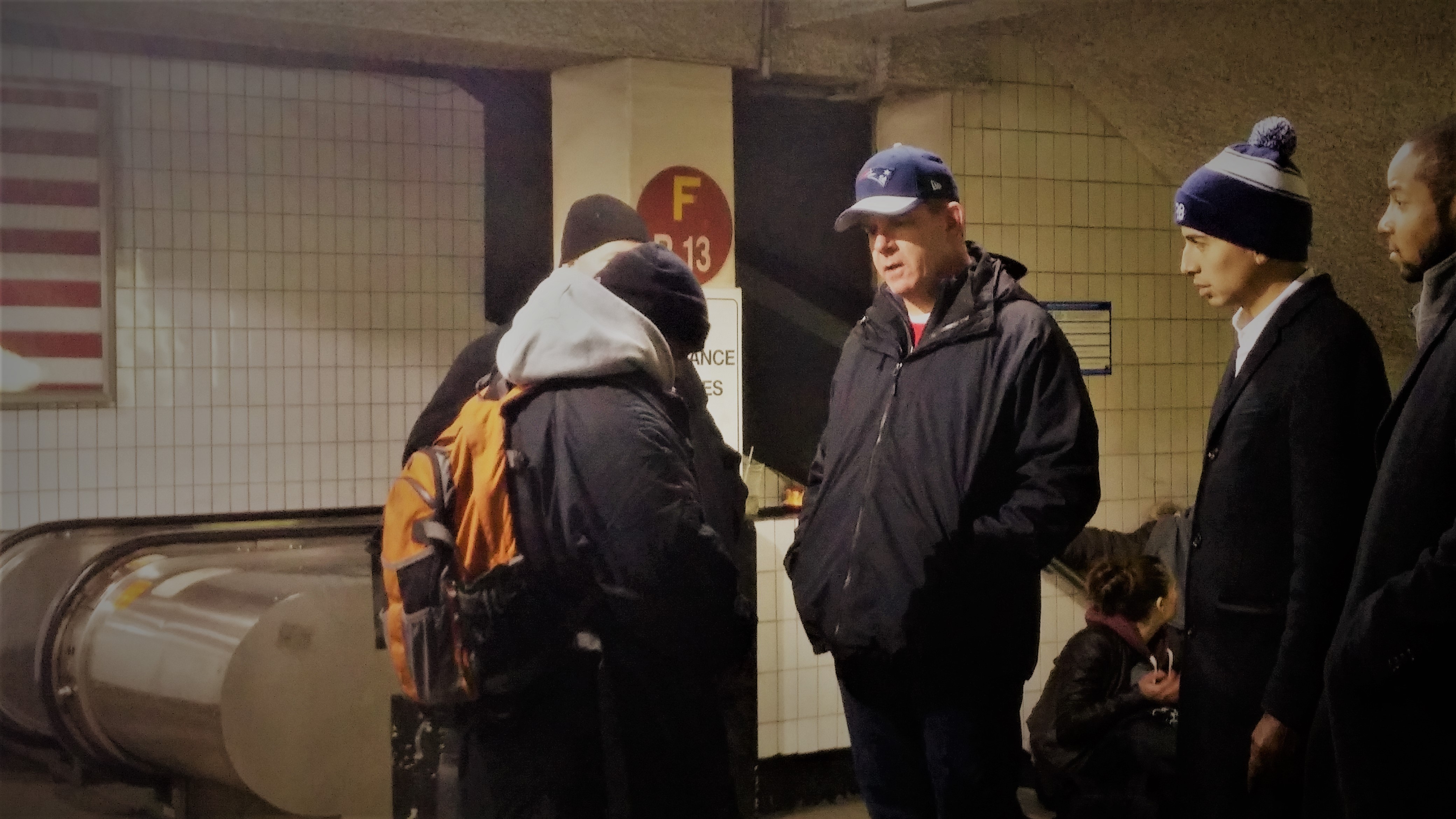At last year’s point in time count—the city’s annual homeless census where groups of volunteers physically count the homeless folks they see in the streets—Mayor Marty Walsh had recently announced the City of Boston functionally ended veteran homelessness. This year, to a crowd of 400 volunteers, he announced that two-and-a-half years of housing first initiatives resulted in Boston housing 1,056 people, including 717 veterans.
The next step, says Walsh, is realizing his goal of ending chronic homelessness by 2018.
His 2018 initiative was developed a year after closing the Long Island bridge in 2014, which displaced clients of a 450 bed homeless shelter and over 100 more clients of substance abuse treatment programs. In 2015, the Long Island shelter was replaced with the Southampton Street shelter, Woods-Mullen was converted to a women’s only shelter, and the city created a coordinated access database to help match homeless clients with the programs that could help them most (for example, assisted living for those with disabilities, or treatment programs for those in recovery).
“Housing first is a great model, but without coordinated access to services you’re setting folks up for failure,” said Walsh.
The city has also seen positive results from a series of “housing surges” that connect senior shelter clients to housing providers, finding homes for 50 seniors.
Recently, Walsh also submitted a package of bills to the State House to prevent displacement and compensate landlords.
Despite such efforts, the Mayor still faces criticism when it comes to affordable housing. As one homeless man told the mayor, blocks away from City Hall, it feels like the poor are being pushed out while condos are being built everywhere.
The Brookings Institute labeled Boston the most economically unequal city in the country. WBZ reported that renters need to earn $124,000 a year to afford a two bedroom apartment in Boston. The mayor also drew ire for past bids to host the 2024 Olympics and IndyCar. Critics of the Boston 2024 push—announced weeks after Long Island’s closure—noted the Olympic Games’ history of displacement and gentrification. Recently, the city’s deal with General Electric—which saw Boston offering $25 million over 20 years in a property tax break to the corporation—has made activists question Walsh’s commitments to those with lower incomes.
Affordbale housing and the GE deal have been early talking points for city councilor Tito Jackson, the only challenger in the upcoming mayoral race. “We gave money to GE to build a bridge for their employees, while saying we didn’t have enough money to rebuild the bridge and help the folks who were on Long Island. That is not the Boston I grew up in,” Jackson said in his first campaign speech.
At any rate, the Mayor’s efforts have also garnered praise. Matt Pritchard, the executive director of HomeStart, a nonprofit that helps find housing for homeless, called the city’s work “incredible” during the homeless census.
Mayor Walsh noted there may be other concerns on the horizon. Earlier that day, he responded to President Donald Trump’s executive order blocking federal funding to sanctuary cities like Boston, which help prevent local police officers from handing undocumented immigrants over to immigration enforcement. At a press conference, Walsh said “We will do everything lawful in our power to protect you. If necessary, we will use City Hall itself to shelter’ and protect anyone who’s targeted unjustly.”
During the count, Walsh told Spare Change News “I’m worried about undocumented immigrants ending up on the streets. They’ll just go deeper and deeper underground they’ll have nowhere else to go.”
When asked if he was concerned about potential cuts to Department of Housing and Urban Development—which was already giving cities a sparse budget under former president Barrack Obama—Mayor Walsh admitted he was concerned about HUD Secretary Ben Carson’s lack of experience in housing.
For the evening, however, Walsh concerned himself more with meeting people out on the street. Some were friendly, some stoic, some complained—one challenged members of his team to sleep outside in the cold.
Many of the stories heard in the streets sound familiar. Miguel, 51, a veteran, has been in and out of veteran housing since he was discharged in 1992. He rarely had enough money left over after paying his rent—usually a bit over $100—and it wouldn’t last long. “I had to choose between paying the rent and eating,” he said. Another veteran a block away suffered from psychological issues and a criminal record that makes finding housing difficult. “[Prison] really messed me up,” he said.
Danielle, 29, prefers the streets to strict rules of shelters, even in rain or snow. But she still complains that city workers and police harass her.
In the Downtown Crossing station, the mayor met a 21 year old woman who was undergoing methadone treatment. She pointed out that while some criticize the treatment, the bigger issue is that “people are dying” from the opioid epidemic.
Each one hopes that city hears their stories. The city will at least use the numbers they learn that night, namely to apply for federal funding and plan their own responses to homelessness.
Last year’s point in time count showed the homeless population had grown in both the streets and shelters. They found 167 people in the streets—a 20 percent increase from 2015—and 1,825 in shelters—a 3.5 percent increase.
The numbers from this year’s count will be revealed later this year.

Leave a Reply
You must be logged in to post a comment.